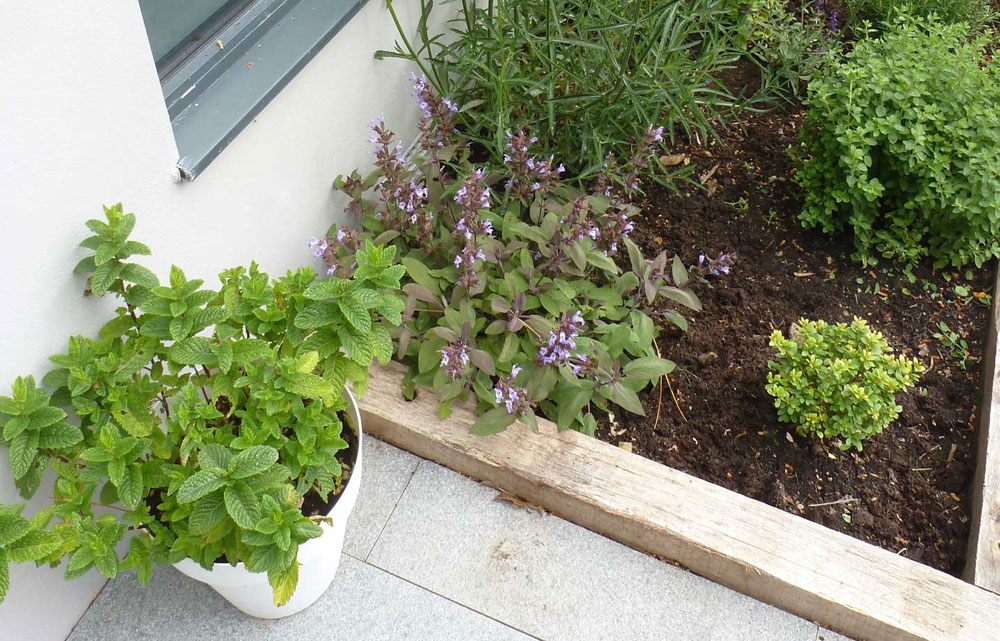
18 Apr Herb garden heroes!
I’ve always been enamored with herb gardens! Whether nestled on windowsills, adorning balconies, or sprouting in planters and small beds, herb gardens hold a special place in my heart. I firmly believe every garden should boast one! Not only does it empower you to infuse your culinary creations with homegrown herbs, but it also beckons bees and butterflies, contributing to a healthier environment and fostering a vibrant ecosystem in your own backyard. Isn’t that truly inspiring? Imagine proudly telling your loved ones, “That oregano? Fresh from my herb garden!” Or gazing out of your kitchen window to behold a bustling scene of bees and butterflies savoring the fruits of your labor.
To achieve this is simple!
Herb gardens can be any size, requiring full sun and well-drained soil with organic matter added such as well-rotted animal manure or homemade compost. This organic matter is rich in nutrients so will help your herbs grow better. Eventual size of each herb plant is key in planning the herb garden. You should always keep in mind that the plug plants you buy or cultivate will grow to their eventual spread and height. There is no point in planting rosemary in a small corner, as this will only outgrow the space!
My all time favourite herbs that are reliable, always generally successful and easy to grow are Rosemary (Rosemarinus officinialis), Sage (Salvia officinalis), Chives (Allium schoenoprasum), Mint (Mentha) and Oregano (Origanum vulgare) . I love to intersperse the herbs with ornamental grasses such as Stipa tenuissima and Lavandula for example. This provides some flow to the herb garden and some height is achieved through the taller grasses.
A combination of these herbs leaves you with an aromatic bed full of beautiful colours and flavours. I always feel there is an art in placing the herbs together. I try to visualise how the herbs will look next to each other, for example, placing chives with their purple fluffy flowers and thin green leaves next to an ornamental grass such as Stipa tenuissima provides some real texture and flow.
The queen of the herb garden, however, not a herb herself, is my absolute favourite perennial Verbena bonariensis. You can get ‘dwarf’ cultivars of this species but I like the dramatic architectural look of this plant towering above all of the little herbs, almost protecting them and providing them with an endless supply of bees and butterflies to the garden. The Verbena bonariensis stands tall, with its tiny flowers bundled together in a ball of loveliness! This perennial will give you an endless display from spring through to autumn, almost winter with the purple heads eventually turning brown.
Don’t forget to plant the Mint in a small pot otherwise, Mint can become quite aggressive and you will find it eventually takes over the whole herb garden!
Planting herbs is very straightforward, digging a small hole in the earth, putting the plug plant in the hole and patting over some earth around the roots. No additional compost is needed provided you have already incorporated the organic matter into the soil. During the summer months, I tend to water the herb garden each evening or early morning when the sun is not yet up. This gives the herbs so much life and potential.
Once your herb garden has transformed into a heroic area of your outside space you will then be able to indulge in picking and cutting the herbs from an endless supply. Enjoy!
If you would like to speak with Victoria at Planting Works to discuss your garden, please do contact us on 01201 830186, or email info@plantingworks.co.uk


